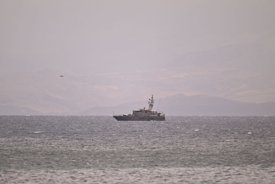Flooding in this historic city of Venice has reached catastrophic levels this week, and some experts are worried it could lead to further sinking.
Per BBC News, the local tide monitoring center claims that the waters in Venice have peaked at 1.87m (6ft). The only time that the tide has risen higher was when records began in 1923 was in 1966, when the tides reached 1.94m high.
A number of listed buildings and museums in the city have been badly damaged as a result of the rising water level, which the mayor has blamed on the effects of global warming and climate change. St Mark's Square has been one of the worst-hit areas, flooding for the sixth time in 1,200 years.
Watch this news report about the flooding in Venice:Flooding in Venice during the fall is a typical occurrence, but rising sea levels are leaving Venice, which is also sinking, profoundly susceptible to severe flooding.
In a video posted to Twitter, Mayor Luigi Brugnaro stated: "The situation is dramatic. We ask the government to help us ... Now the government must listen. These are the effects of climate change... the costs will be high."
He also urged citizens to share images of the floods on social media, and various photos and videos have already been widely disseminated on Twitter.
BBC News reports that project to protect the city from flooding was started back in 2003, but has been hit by a number of severe delays and scandals.
The Mose project was supposed to surround the city with floodgates, which could be raised from the seabed to shut off the lagoon in the event of rising sea levels. It was successfully tested for the first time in 2013, but the barriers won't be active until 2021, after the "final phase" of testing.



